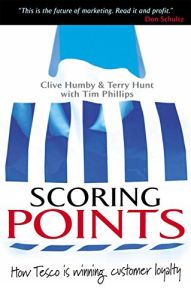Join getAbstract to access the summary!

Join getAbstract to access the summary!
Clive Humby, Terry Hunt and Tim Phillips
Scoring Points
How Tesco Is Winning Customer Loyalty
Kogan Page, 2004
What's inside?
British grocer Tesco uses its loyalty program to get customer info, and uses that to change behavior and boost profits.
Recommendation
Marketing experts Clive Humby and Terry Hunt and journalist Tim Phillips explain how British grocer Tesco collected, analyzed and used customer data to become a retail giant. Tesco paired its Clubcard loyalty scheme with jazzy information technology (IT) to set a new standard for knowing your customer. Humby and Hunt, as the collaborators behind Tesco’s data-driven transformation, focus on praise, but they don’t hide Tesco’s early mistakes or skimp on its strategic hand-wringing. Though somewhat dryly written, the book compellingly discusses aspects of loyalty programs that don’t get much ink outside the retail trade press. For example, it covers the way Tesco’s accumulation of rich customer data forced some painful changes in its corporate culture. The authors also serve a sampling of delicious anecdotes and share Tesco’s early difficulty with getting some customers - chiefly students - to join Clubcard. Tesco once gave students at a Q&A focus group some complimentary wine and cheese only to find that they "swiftly drank so much wine that they made little sense to anyone still sober." The book shines when discussing such early efforts by Tesco to micro-segment customers by lifestyle habits, including trying to glean individual personality traits from the contents of each grocery cart. getAbstract.com recommends this case study both as the story of Tesco’s gutsy, groundbreaking experiment with IT and as a textbook example of how the Digital Age keeps making it possible for smart, daring businesspeople to rewrite the rules of commerce.
Summary
About the Authors
Clive Humby is the founder and chairman of dunnhumby, a U.K.-based global consumer products marketing firm. Humby is also visiting professor of integrated marketing at Northwestern University in Evanston, IL. Terry Hunt is chairman of EHS Brann, a direct marketing firm, and helped with the development, launch and creative strategy behind Tesco’s Clubcard loyalty program. Tim Phillips is a British business journalist and broadcaster whose work has appeared in a variety of European newspapers. He also appears on BBC TV and Sky News.



















Comment on this summary